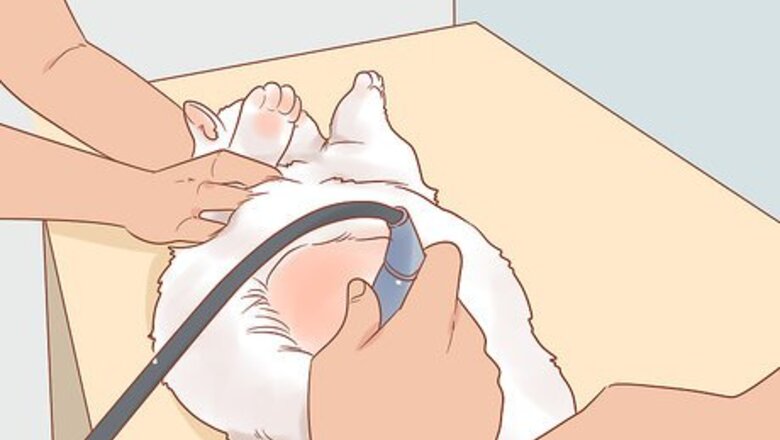
views
Preparing for the Kittens' Birth
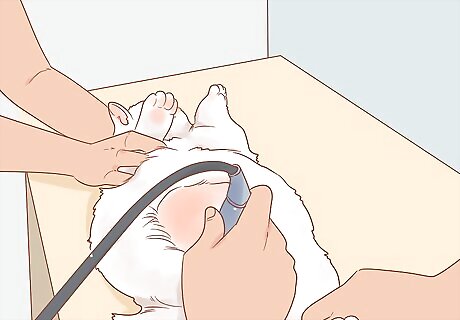
Take your cat to the veterinarian once you realize she's pregnant. Just like with humans, it's a good idea to have your cat checked over to make sure she's healthy. Plus, the vet can help determine when the due date is so you can be ready. A cat's gestation is about 8.5 weeks. By 3-4 weeks, the vet should be able to tell just with their hands if the cat is pregnant. They can also do an ultrasound, though that will cost more money. Tell your vet you think your cat's pregnant when you make the appointment so they can be ready. Signs your cat might be pregnant include her becoming more vocal and affectionate, pulling fur off around her belly, and having morning sickness. You may also notice her gaining weight.
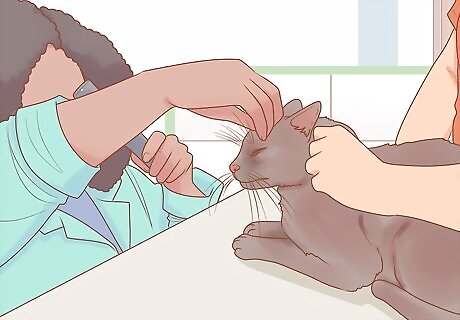
Check with your veterinarian before giving your cat any treatment. Cats shouldn't have vaccines while pregnant, so let your vet know your cat's pregnant before they work on her. Also, call your vet if you need to give her other treatments, such as flea or tick medicine, before you dose her. Certain medications may not be safe for pregnant cats.
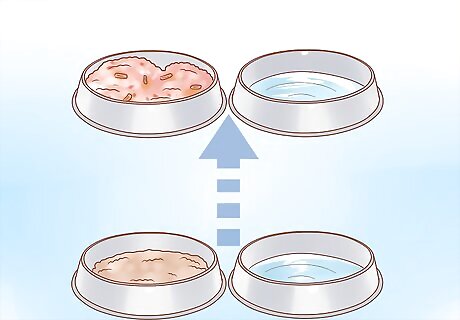
Give your cat more food during the last half of her pregnancy. When you reach about the 4th week of pregnancy, start adding a little more food to your cat's diet. Within a week or 2, you want to reach a diet of 50% more than you've been feeding her. Don't start giving excess food early in the pregnancy, as that will make the cat gain weight. In the first few weeks of pregnancy, the kittens will get all the nutrients they need from the mother's regular diet.
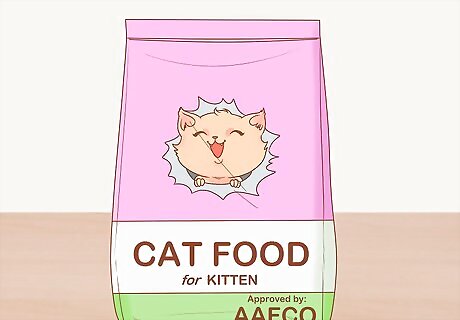
Switch to a food made for kittens over several weeks. About the same time you begin adding food to the cat's diet, start switching her over to a cat food formulated for kittens. That will ensure both the mother and kittens are getting the nutrients they need. To switch her over slowly, replace a little of her food the first day with the new food. Each day, add a bit more of the new food and a bit less of the old food until you've gotten her completely switched over. You can do this over 2 weeks or so.
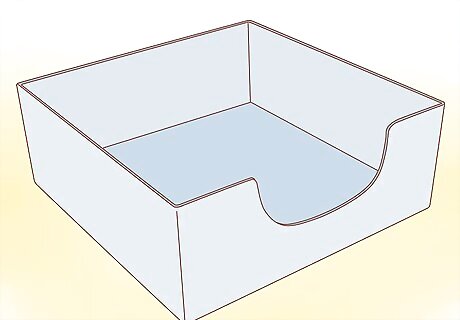
Set up a nesting area out of the way. Pick an area that's away from the traffic in the house. If you have other pets, try to keep them out of this area. Put down clean blankets, sheets, and/or towels to provide a nesting area. Cats often like enclosed spaces, such as a laundry basket or box, for giving birth. Pick one with low sides so the mother can get in and out easily. Make sure to choose blankets and towels you don't mind getting dirty and that you can wash easily.
Caring for the Mother during Birth
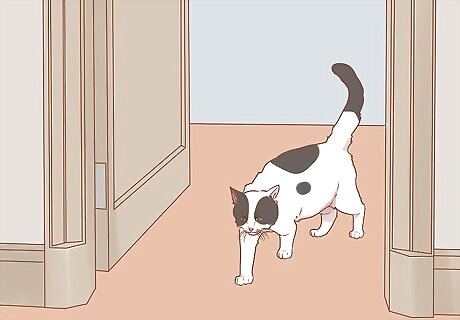
Keep your cat indoors in the last weeks before birth. If your cat isn't exclusively an indoor cat already, you should make sure she stays inside starting in about the 6th or 7th week of pregnancy. That way, you can keep an eye on her during birth, and you'll be nearby if anything goes wrong. Plus, you'll be able to care for the kittens as needed. If your cat has the kittens outdoors, it may be difficult to find them and care for them, which can be dangerous if the weather is too hot or cold. Plus, predators could cause trouble for the mother and her kittens even in good weather.
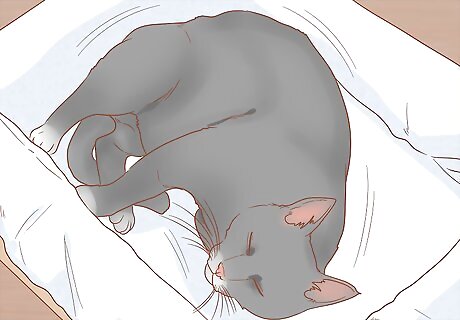
Watch for the first stage of birth. This stage can last up to 36 hours. Your cat may seem restless, and she may keep wandering over to the nesting area. You shouldn't see any straining, though the mother will be having contractions during this time. As it gets closer to birthing time, she may paw at the bedding in the nesting area. She may also come over to you for extra petting and love. In the 24 hours before birth, she may stop eating.
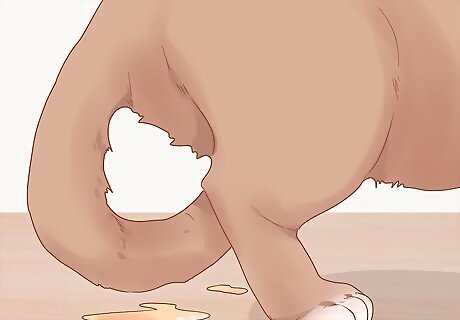
Look for the first membrane to appear in the second stage. In this stage, your cat's contractions will get stronger. You may see the membrane first, and then it will burst. The kitten coming out will still be covered in a membrane even after the water bag bursts, and the kitten's head will appear first, followed by the rest of the body. The cat may take anywhere from 5 to 30 minutes to deliver each kitten, so the process can take a while.
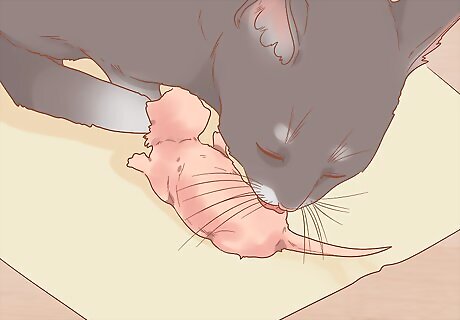
Let the mother care for the new kitten. The mother will chew open the bag around the kitten and lick it. This process allows the kitten to start breathing on its own, so let the mother do her work. The mother will also chew through the umbilical cord. If the mother doesn't do this, wipe the membrane off with a soft towel, making sure to get the nose and mouth clear. Rub the kitten with a circular motion to help it start breathing. If the mother doesn't do this, you need to talk to your vet once you're done. If the mother doesn't cut the cord, tie off the cord about 1 inch (2.5 cm) from the kitten's body with clean thread. Tie it off again 1 to 2 inches (2.5 to 5.1 cm) down, then use your hands to break the cord apart between where you tied it. Wash your hands before starting this process. Most litters will be between 4 and 6 kittens, though a cat can have a litter as big as 9.
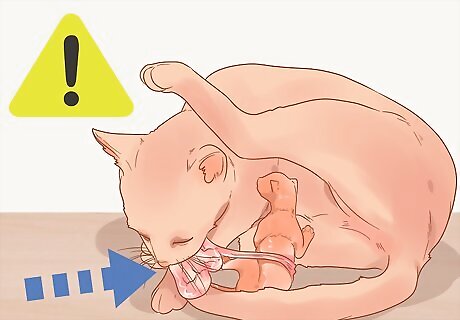
Watch for the third stage, afterbirth, with each kitten. After each kitten comes out, the mother will pass the membranes and placentas. In some cases, 2 kittens will come in a row and the afterbirth will follow both of them instead. Once they're birthed, pull the placentas out of the mother's reach if you can. Count them to make sure you have the same number as you do kittens. If you leave the placentas in range, the mother will eat them to hide the evidence. If you don't have enough placentas, you'll need to talk to the veterinarian, as placentas that aren't passed can cause infections.
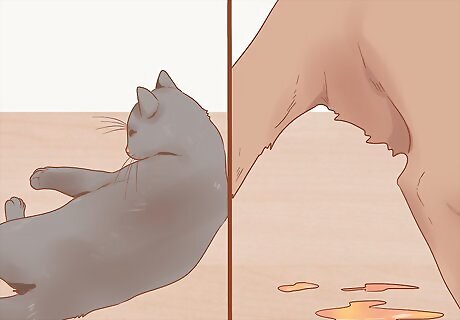
Don't panic if the mother stops in the middle of having kittens. Some cats have interrupted labor. They may stop giving birth between kittens. They'll eat, take care of the other kittens, and drink water. It may take up to 24 hours for the cat to start again. You won't know the labor's interrupted, however, unless you had an ultrasound to determine the number of kittens your cat is carrying. There's no sign that shows your cat is done having kittens, as even if she stops straining, she could still have more later. However, you should call your vet just to make sure nothing's wrong! She shouldn't be straining during this time.
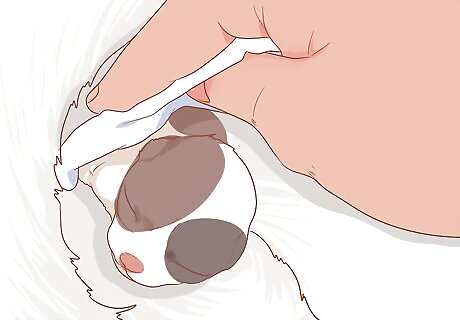
Watch for problems. If the mother is having trouble passing a kitten, either because she's too tired or it seems stuck, you can gently pull on the kitten. However, don't yank, and once the kitten is out, call the vet. If pulling on the kitten obviously causes the mother pain, stop immediately. If the cat is straining hard for 20 minutes and you don't see a head, call your vet. If you see a head and it still hasn't been pushed out after 10 minutes, call the vet.
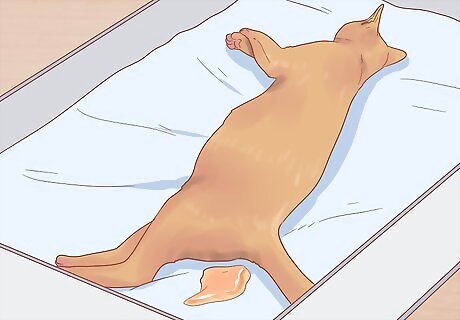
Look for lethargy and loss of blood. Cats can run a fever and become lethargic during birth. If you notice signs of your cat getting very weak, call the vet. For instance, she may have trouble straining. Similarly, if your cat is losing fresh blood from her vaginal area and it goes on for more than 10 minutes, call the vet. Fresh blood is bright red.
Providing for the Mother and Kittens After Birth
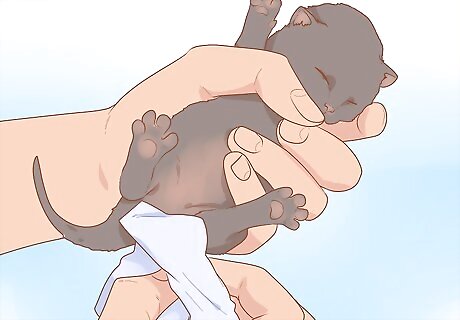
Make sure all the kittens are dry if the mother doesn't have the energy. Gently rub the kittens off with a dry towel to get off as much liquid as possible. If the kittens are damp, their body temperature could fall quickly, which can be dangerous. Also, change out the blankets and towels in the nesting area after the mother is done giving birth. They will likely be soiled.
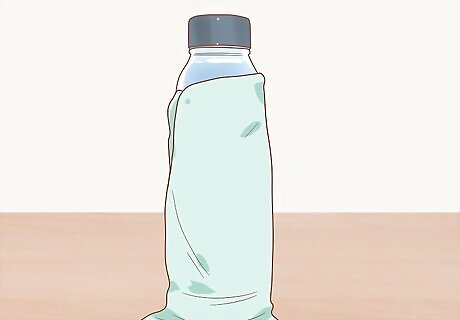
Wrap a warm water bottle in a towel if the cat ignores the kittens. Sometimes, the mother will not take to the kittens right away, if at all. If she doesn't, you need to keep your kittens warm! Fill up a water bottle with warm water and wrap it up in a towel. Place the bottle in with the kittens for warmth. Talk to your vet if the cat is ignoring the kittens!
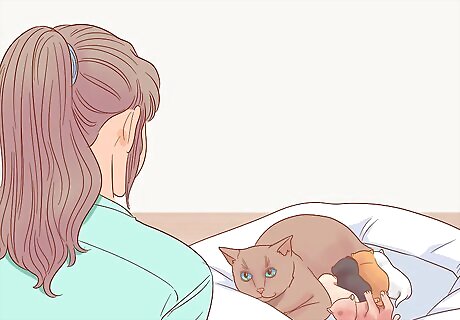
Assist the mother as she cares for her kittens. The mother cat can do most of the caring for the first few weeks until the kittens start to climb out of the basket for adventures. Clean the water bowl daily to keep it fresh for the mother and make sure all the kittens are getting milk by watching them feed. Some small kittens may not be able to feed on their own. If they can't, talk to your vet about how to hand feed them.
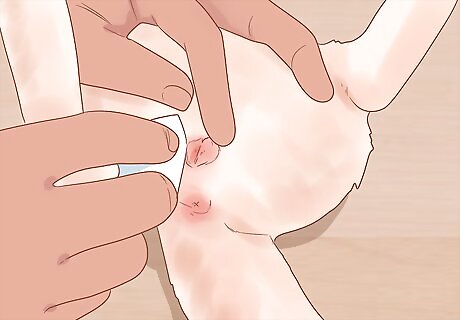
Look for greenish vaginal discharge in the weeks after birth. Reddish brown discharge is fine for up to 3 weeks or so after birth. However, if it is green instead or it smells bad, you need to take your cat to the vet. A little green discharge immediately after the placentas are expelled is okay.
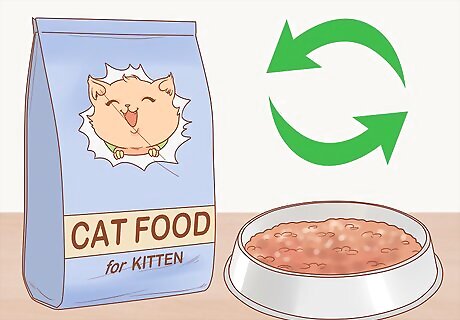
Continue supplementing the mother's diet until the kittens are weaned. Keep her on the kitten food you've been giving her and continue to feed her the extra 50% at meals while she is providing milk for her kittens. She will still need that extra nutrition to produce milk for the kittens until they are weaned at about 4-5 weeks. As your cat gets closer to weaning, she may even need twice the amount of food she was getting pre-pregnancy.
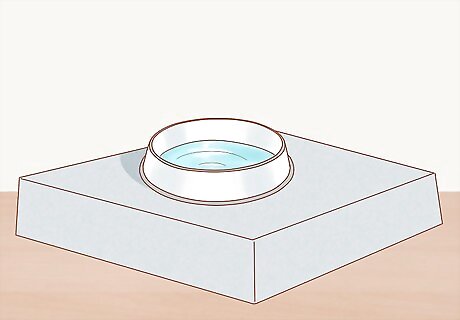
Set the water bowl out of the kittens' reach until they wean. Kittens don't need the water, and they can drown if a bowl is left in with them. Put the water outside the container or up higher where they can't reach. However, be sure to provide your mother with plenty of fresh water while she's feeding her kittens!




















Comments
0 comment